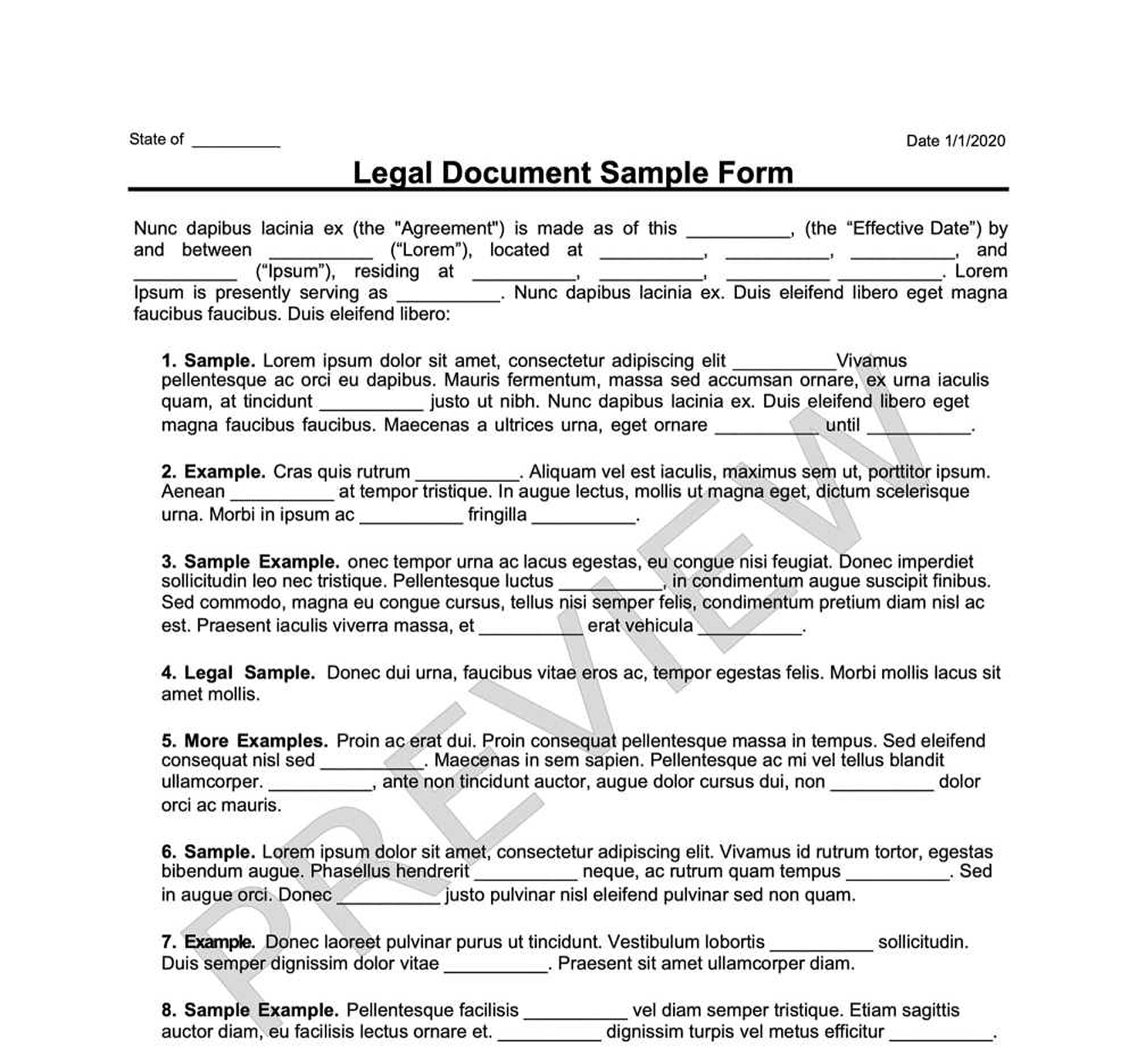Residential Rental Application
A well-prepared Residential Rental Application helps property owners evaluate prospective tenants in weeding out the unsuitable and choosing the best tenant for their rental property.

How it Works
Build your selected document.
Answer a few simple questions with step-by-step instructions.
Print & download forms instantly. Sign & make it legal.
What Is a Residential Rental Application?
When finding a tenant for your property, there are plenty of details to consider. The first step to a successful screening is to prepare a Residential Rental Application.
You would include all of the questions that can help you identify the most promising tenant in your Residential Rental Application. You can also ask for the applicant's consent to run a background check and make an inquiry to the credit bureaus for their credit scores.
A Residential Rental Application should not contain irrelevant or inappropriate questions. The goal is to have a document unobjectionable to both sides to serve as the starting point of a fruitful landlord-tenant relationship.
What Is a Residential Rental Application?
A Residential Rental Application is a document in the form of a questionnaire. Landlords and property managers use this to collect the data from prospective tenants. Rental applications are used for all types of rental properties, including apartments, houses, and vacation homes. The purpose of this document is to protect your income and property by selecting a tenant who is most likely to pay rent regularly and take proper care of the property.
Keep in mind that a Residential Rental Application is not a contract. If a prospective tenant completes an application, it does not mean they must rent your property, or you must rent to them.
Other Names for Residential Rental Application
Depending on your state, a Residential Rental Application may also be known as:
-
Tenant Rental Application
-
Rental Lease Application
-
Tenant Application
-
Rental Application
Who Needs a Residential Rental Application?
All property owners and managers looking to lease a living space could use a Residential Rental Application. Typical users can range from the management of apartment complexes to owners of a single apartment or house.
Conversely, prospective tenants should not hesitate to complete a Residential Rental Application if required, as long as the questions follow the best practice.
Why Use Swyft Forms for Your Residential Rental Application
Customized for you, by you
Create your own documents by answering our easy-to-understand questionnaires to get exactly what you need out of your Residential Rental Application.
Right for your state
Each document on Swyft Forms is customized for your state.
How to Create a Residential Rental Application with Swyft Forms
A proper Residential Rental Application should contain all the right questions to evaluate a large number of applicants. At the same time, it omits inappropriate questions that may cause a potential tenant to feel uncomfortable or even violate federal or local laws.
Let Swyft Forms help with our extensive library of attorney-vetted legal forms. The process is fast and easy. All you have to do is fill out our easy-to-understand questionnaire. Once complete, download your form as a PDF or Word document from your secure online account.
What Information Will I Need to Create My Residential Rental Application?
To create your document, please provide:
-
Location: The address of the property
-
Terms of lease: The duration and payment amount of the lease
-
Security deposit: The amount you expect to receive as a deposit against uncollectible rent and property damage
-
Name and contact: The applicant's full name, current address, telephone number, and email
-
Other occupants: Names and contacts of all other individuals, apart from the applicant, who will be staying at the property
-
Residential rental history: The applicant's rental history, including the info of the previous landlords
-
Employment history: The applicant's employment, including current and past employers and positions
-
Pet info: The applicant's pet ownership, including the number and types of pets, if any
-
Vehicles: The types of vehicles that the applicant owns and expects to park at the property
Residential Rental Application Terms
-
Landlord: The rightful owner of the rental property
-
Tenant: An individual who pays rent to occupy and use another person or entity's property, in this case, the landlord
-
Rent: The amount of money the tenant is required to pay to the landlord according to a schedule (e.g., monthly) to retain the right to use the property
-
Cotenant: The second or additional tenant of a property
-
Credit history: An individual's history of credit usage as recorded at a credit bureau
Residential Rental Application Signing Requirements
Only the applicant has to sign the Residential Rental Application. The signature can be optional but required if you need the applicant's consent to run credit checks. However, it is not a contract and cannot be a substitute for the lease agreement.
What to Do with Your Residential Rental Application
Gather all your completed Residential Rental Applications and use them to find the most suitable tenant for your property. If your chosen candidate agrees, the next step is to collect the first month's rent and security deposit and enter into a residential lease agreement. This is usually followed by the turnover of keys and a rental inspection checklist.
Other Names for Residential Rental Application
- Residential Rental Application Form
- Residential Rental Application Document
- Residential Rental Application Agreement
- Residential Rental Application Contract
- Residential Rental Application Template
- Residential Rental Application Checklist
Who Needs a Residential Rental Application?
Why Use Swyft Forms for Your Residential Rental Application
Customized for you, by you
Specific to Your Jurisdiction
Why choose Swyft Forms?
Create professional documents for thousands of purposes.
Make unlimited documents and revisions.
Our documents are vetted by lawyers and are applicable to all 50 states.
